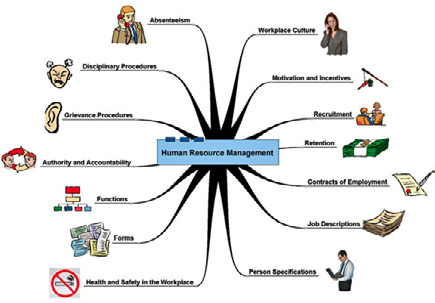Companies today must re-assess their talent needs in order to remain competitive and drive growth. The satellite communications industry faces challenges all the while remaining ripe with opportunities. Employers must ensure they obtain a “great hire” to continually further ongoing business success.

Is Human Resources Your Best Recruiting Resource?
In traditional business models, the need for an employer to acquire talent is—and always has been—the responsibility of Human Resources (HR). The name “Human Resources” itself parlays to all, “We are all about the existing employees and adding new ones.”
Well, if it were that simple, then candidates would be joyous in their anticipation of an interview with an employer’s HR team. Hiring managers would regard their HR as a partner/team member who solved business problems by proactively landing the correct individual to fit the position before the hiring manager’s critical need ever reached a top priority.
The issue that too few business leaders are discussing is: How ineffective has HR become as a recruiting resource, and what should be done about that situation?
Where has HR lost its way? What has changed inside business that drives HR to attempt to succeed when the goal is unachievable?
Business is in a state of constant flux and must make daily adjustments to remain relevant and valuable to their marketplace. Few companies would consider returning to a previous, older business model. Yet, some employers are attempting to freeze time by applying an outdated HR model.
In a simpler time, the requirements for HR to manage an employer’s benefit package and also an employer’s recruiting could have worked. Today’s HR responsibilities have morphed into a complex and somewhat opposing field of disciplines.
Today’s marketplace has become more complex and more specialized.
Employee benefits have become expensive and complex, and the trend is for them to become even more so. A benefits expert can deliver significant value to their employer, especially where critical analytics are concerned. However, the person who excels at analytics does not necessarily possess equal expertise when it comes to pursuing promising talent for the company.
In addition to maintaining a command of analytical data, Employee Relations has become its own complex field of specialization. Today’s businesses have minimal margin for error in hiring critical talent. Employers have to get it right, every time. Recruiting is less about résumés and stale interview questions. Most candidates have rehearsed answers to predicated behavioral and situational questions that will be asked of them.
Best-Practice-Recruiting today is solving a critical business problem. To be effective, the recruiting resource must have a command of the business problem, the existing chemistry of the hiring manager as well as the ability to employ a dedicated amount of time to analyze the applicants in order to select the few who possess the technical and cultural fit to fill the position. Additionally, the individual who has a command of the business problem and enjoys pursuing qualified candidates does not necessarily have the expertise to also excel at digesting analytical benefits-related data.
Under the outdated traditional approach, employers are asking their HR Experts to be the jockey on the racehorse in the morning and then the center on the basketball team in the afternoon.
Are employers asking HR to provide more than should be expected? How can HR deliver market-value as the master of multiple disciplines?
My HR friends acknowledge (offline) that they can master one discipline or the other, but struggle when required to become experts in diverse and somewhat opposing disciplines. They have commented that today’s business leadership wouldn’t ask an Operations Expert, Marketing Expert, Finance Expert or Sales Expert, to possess expertise in multiple, opposing disciplines.
What is the harm in keeping the same HR model in place for as long as possible? Well, the consequences of the legacy model include:
– Employers hiring “the available candidate,” but not even interviewing the best candidates
– Getting candidate hiring correct is more crucial now then ever before… a failed hire becomes more expensive every day. Estimated costs of a failed hire are as much as 15 times that individual’s annual salary
– Business leaders with significant P&L responsibilities must follow an outdated policy where HR dictates the recruiting process without having a command of the business problem that must be solved. This results in the employer’s failure to hire the “Best Talent”

– With an analytical mindset, there is limited opportunity for the HR Expert to engage conversationally with critical talent and transition from stale interview questions into a business discussion
– Today’s recruiting is much more than trying to excite candidates with “a great benefit package.” As it is within their expertise, many HR Experts fall into a benefit presentation during their recruitment discussion, getting sidetracked, and fail to focus on the candidate’s ability to solve the critical business problem
On a broader level, following the legacy HR Recruiting Model may be saying far more about the employer’s inability to maintain marketplace relevance.
Larger organizations face a bigger challenge in attempting to improve their hiring procedures. Organizations that remain static in their hiring procedures will note that the more nimble, more creative and more adaptive organizations will pass them by in obtaining the most appropriate hires.
Where Is HR / Recruiting Trending?
Through some trial and error, today’s emerging HR model is centering Human Resources on disciplines that include:
– Benefits
– Employee Relations
– Related “inter-company priorities”
First, a member of senior leadership should be assigned the responsibility of acquiring critical talent in order to solve business problems. This senior leader is separated from the traditional HR responsibilities.
With the assignment to acquire critical talent, one avenue is to engage with outside professionals, and to include at least one expert who possesses a plethora of recruitment models.
Another step would be to develop a group of internal “business specialists” who report directly to the business unit —not HR—and who are responsible for solving business problems through the acquisition of needed talent. This is disconnected from the responsibilities of analyzing benefit related data and is measured solely upon acquiring the correct talent and is focused on longer term problem solving.
If talent is about business, and people are about talent, then shouldn’t Best-Practice-Recruiting focus on spending time with the prospective talent while discussing business issues?
No doubt, adjusting the legacy model may not be an easy path to follow. However, it certainly isn’t of benefit when your competitors are growing through the acquisition of great talent and your organization has fallen by the wayside.
Good hunting!

About the author
Bert Sadtler is an invited speaker who discusses the shift in the recruitment paradigm toward acquiring critical, senior level talent, as well as in analyzing the shift in the employer’s performance-based compensation model. Bert can be reached at: BertSadtler@BoxwoodSearch.com.
About Boxwood Search
As a dedicated, consulting resource to the employer, Boxwood designs compensation models to reflect the current trends and launch senior level recruitment campaigns to attract and acquire talent. Position examples include: CFO, COO, Senior Program Manager, Vice President of Sales, Director of Marketing, Vice President of Engineering, Director of Contracts & Compliance and Vice President of Business Development. Examples of industries have included: Government Contracting, The Intelligence Community and the Communications/Technology Sector.


